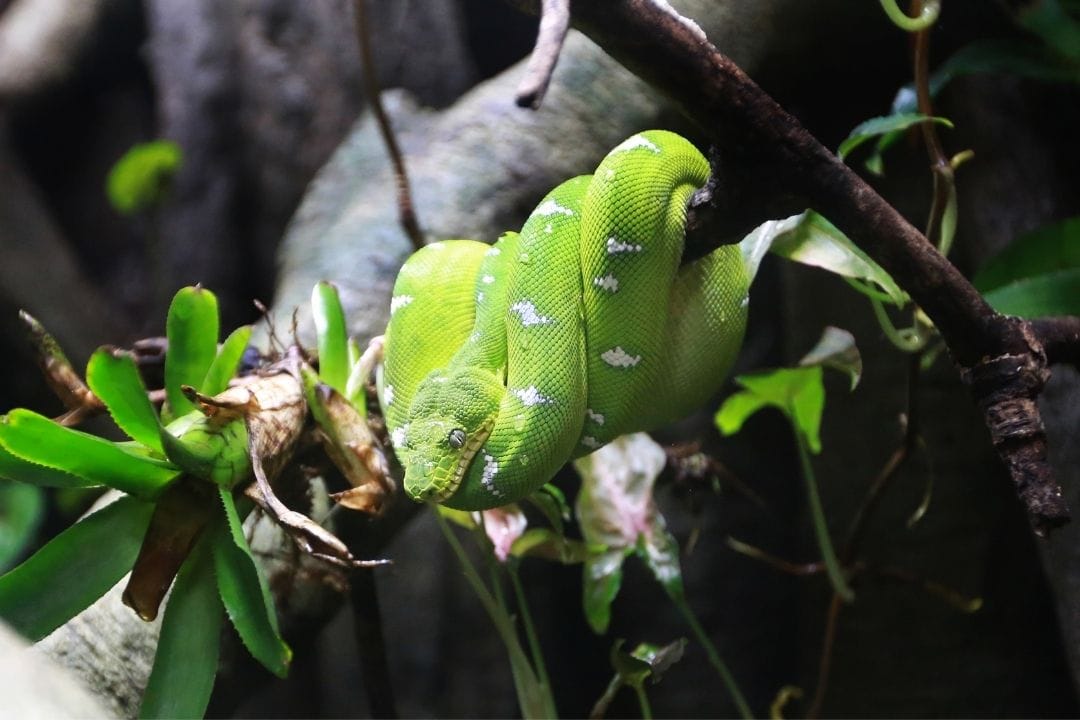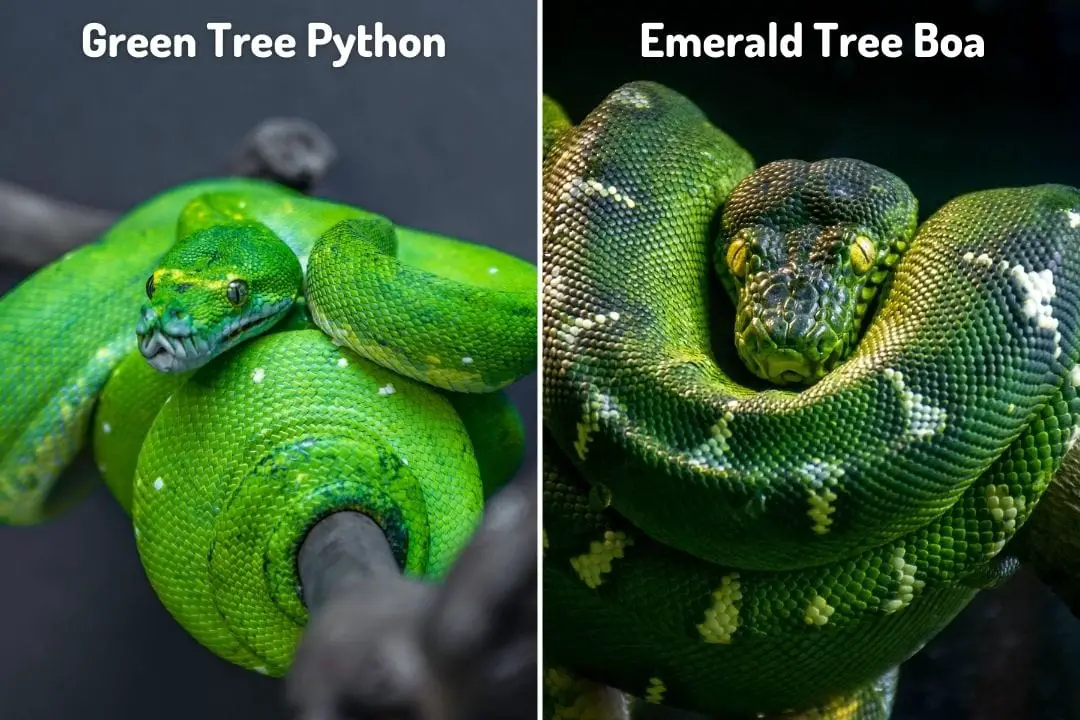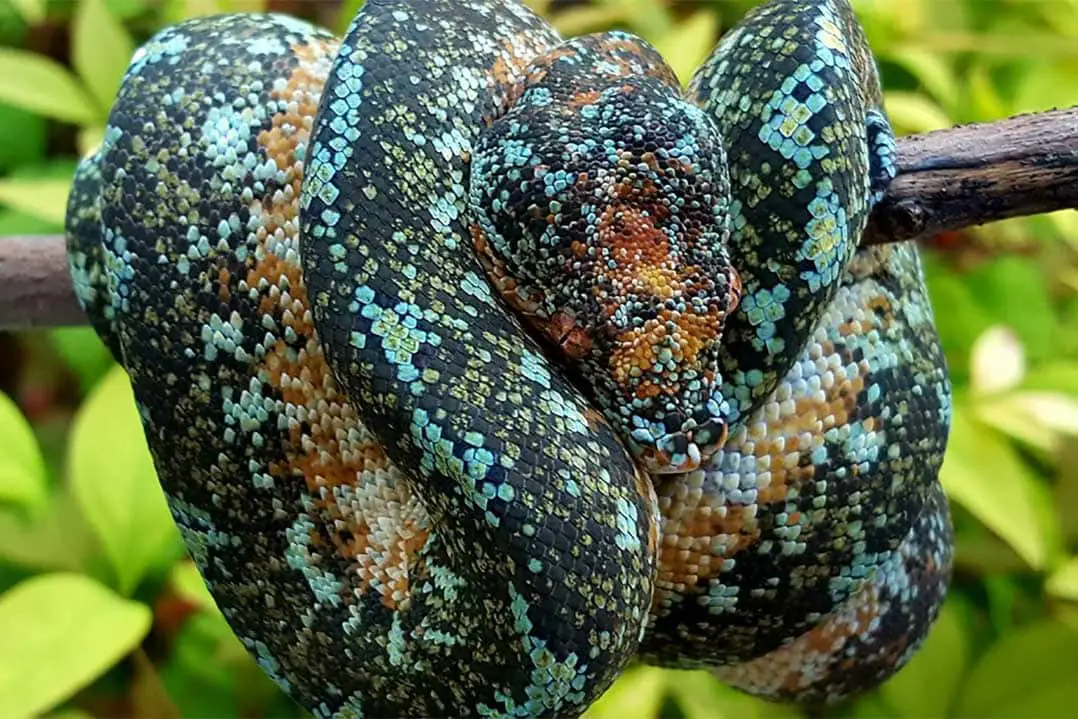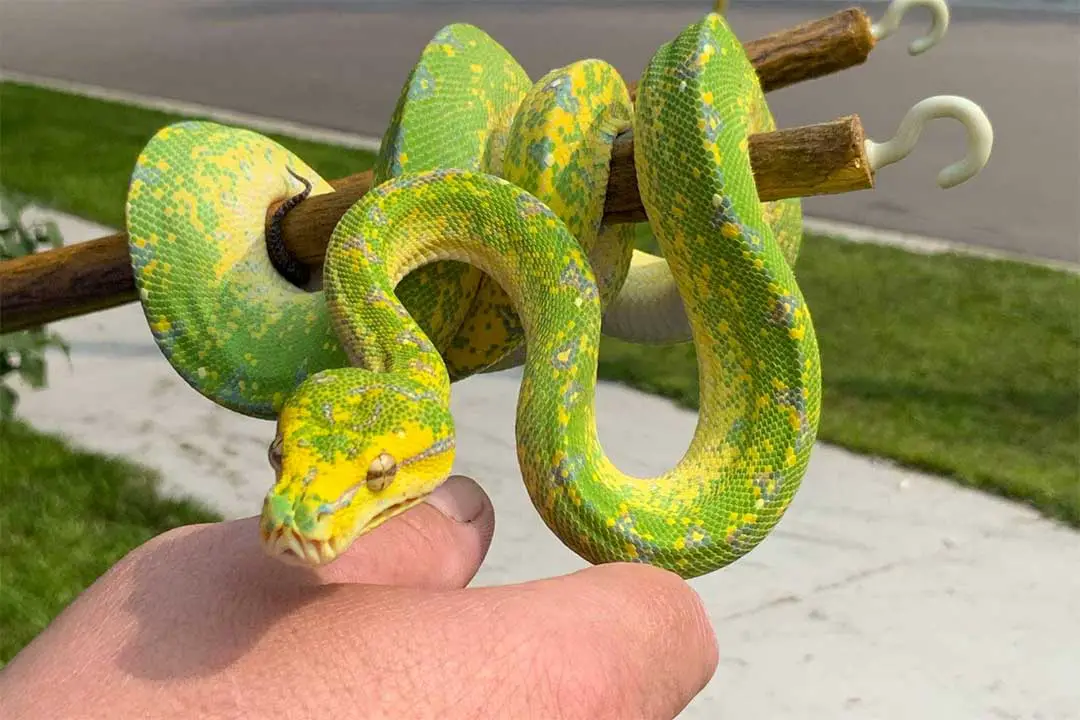Green tree pythons (Morelia viridis) are a species of arboreal snake native to Australasia. These animals can be found in New Guinea, Indonesia, and Australia.
How big does a green tree python get?
On average, green tree pythons are between 4 and 6 feet in length. An adult will typically not weigh more than 4 pounds. Males tend to be smaller and lighter than females.
Hatchlings and Juveniles
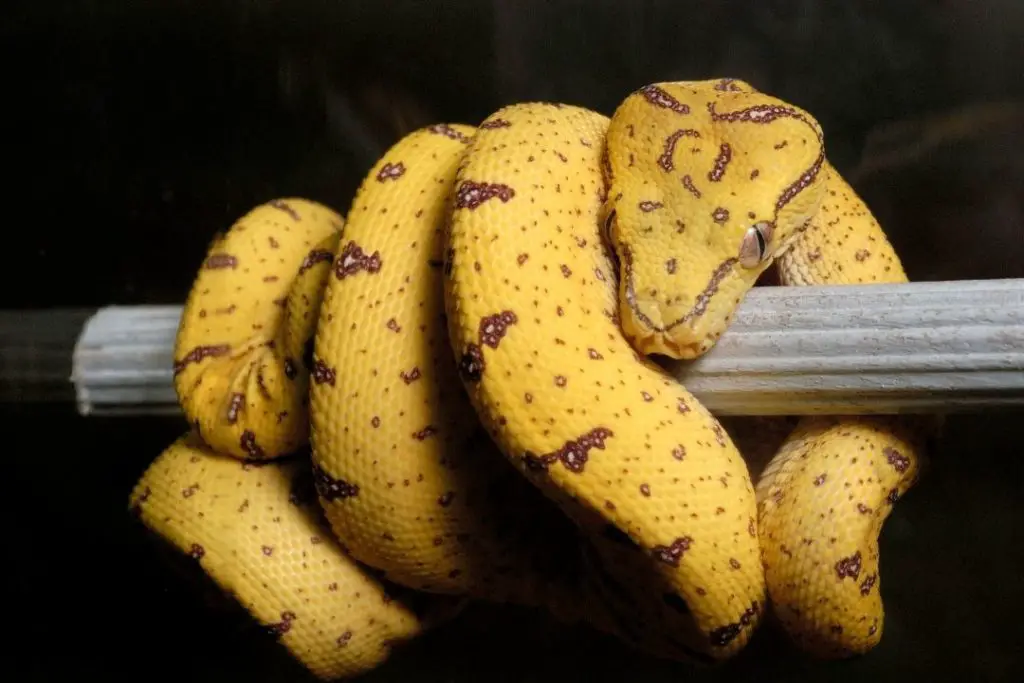
Green tree pythons are pretty small fresh out of the egg. They tend to be about 11-14 inches and only weigh a few ounces.
By a year old, these snakes have typically doubled in length and weight.
This is also the point that their color will change from their hatchling coloration. Green tree pythons typically start life with a yellow or red color.
Once they hit a year old, they start getting their adult coloration. This can be yellow, green, blue, or a combination of these colors.
This color change is very quick, only taking 5-10 days for yellow individuals from Australia.
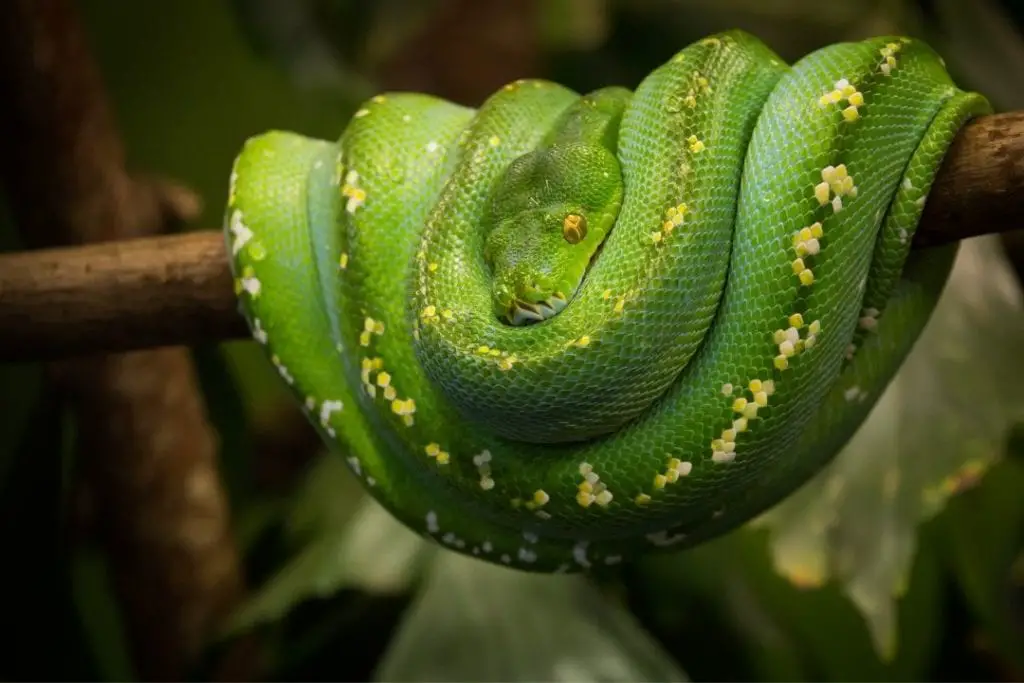
This change occurs when the snake is large enough that its habits change. Juveniles typically hunt small ectothermic animals on the forest floor or close to it.
They can be found in areas of the rainforest where sunlight reaches the forest floor. Adults hunt larger endothermic animals in the canopy.
They prefer areas with completely closed canopies and will rarely be seen close to the ground. This change does not indicate that the animal has reached sexual maturity.
This tends to take until at least 2 years of age. Most females will reach sexual maturity at around 3.6 feet in length. Males will reach it at just under 3 feet.
Most males will be about 2.4 years at sexual maturity and females will be around 3.6 years old.
Adult Size
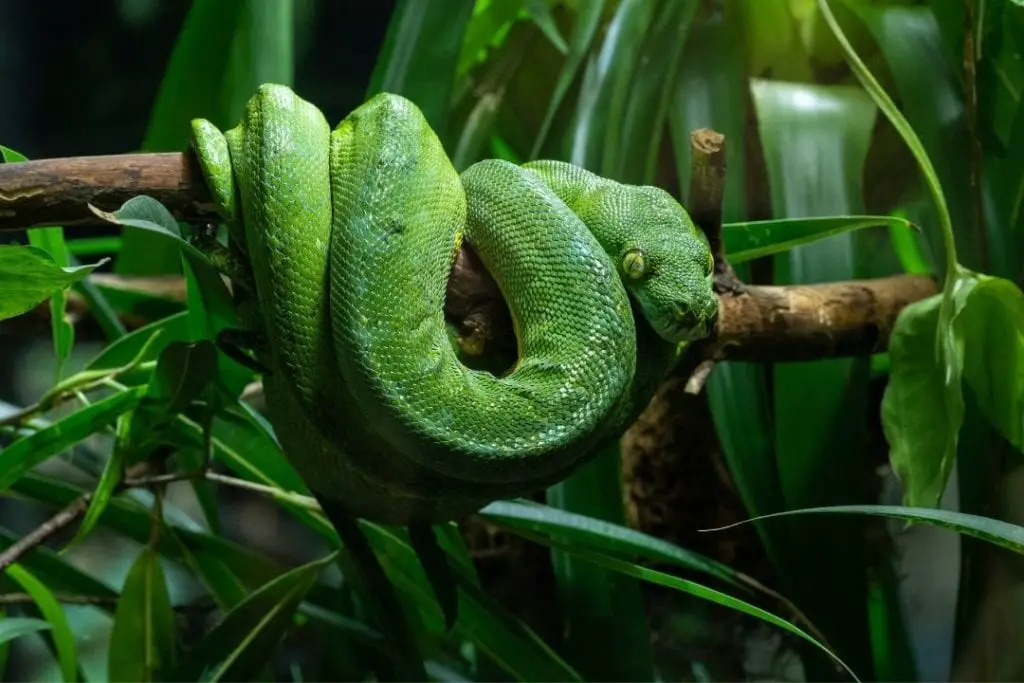
Adults do have sexual dimorphism in their size. Males are typically smaller than females. Males rarely get over 5 feet or 2 pounds.
Females can reach over 6 feet and have been seen at the higher end of the weight range. Most females will be around 2-3 pounds, but some captive adult females can be larger.
This size difference is likely because females require the extra size to successfully grow and incubate eggs.
Females will lay 5-30 eggs in one clutch. Females typically do not eat when gravid or during incubation. The mother will select a secure location and lay her eggs.
Then, she achieves the proper incubation temperature by coiling around the clutch and shivering. This warms the eggs and allows them to hatch.
However, the female will use up a lot of energy doing this and will lose significant amounts of weight. Other snakes that use this tactic lose a significant amount of weight during incubation.
It is unknown exactly how much weight a wild female will lose since very little about wild reproduction is known.
Wild individuals are noted as being smaller than captive specimens. This likely boils down to prey availability.
A wild snake needs to catch every meal.
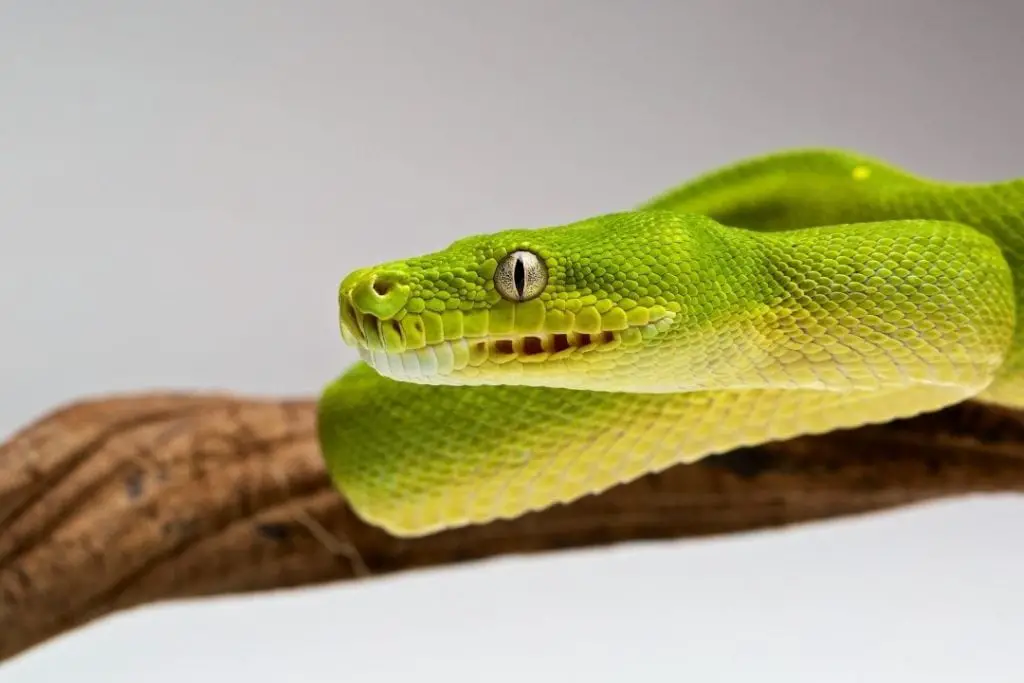
Most animals will pick a spot and try to lure in prey by wiggling the skinny tail in front of their face. If the snake is unsuccessful or only larger animals come by, the snake may end up missing meals for weeks or months.
Captive animals have guaranteed meals so long as they are willing to eat. This means that captive animals will typically be larger.
This includes length, weight, and body condition. Most captive animals will also grow faster since they are getting enough food on a regular basis.
Growth Rate
Captive green tree pythons typically have a pretty steady rate of growth. Most babies will have doubled in size by the time it hits a year old.
These snakes tend to stay fairly slim as adults. This is because they are arboreal and need to stay light and agile.
These snakes can easily put on weight, but it negatively affects them much faster than many other species.
They grow more slowly than many other common species. You will notice that your snake gains length faster than it gains in weight.
Very fast weight gain can be a sign that you are overseeing your snake. In adults, their weight should stay pretty stable.
It can take a long time for a snake on a feeding strike to start losing weight. So your average adult on a proper feeding schedule will have a fairly steady weight through its life. While green tree pythons do not ever stop growing, this growth is very slow.
It will likely be only a fraction of an inch a year once your snake hits adulthood.
By 5 years of age, growth will be so slow that you likely won’t be able to tell. Keep an eye on weight at this point, since adult snakes can become obese very quickly and suffer because of it.
Conclusion
Green tree pythons will rarely get over 5 feet. You may see females that top 6 feet, but this is rare. They are slender snakes that tend to stay light.
If your snake gets over 4 pounds, you may need to scale back on meals. Remember that an adult only needs to eat every 12 days or so.
For more information on proper enclosure setup and daily care for morelia viridis snakes, you can read my green tree python care sheet.
If you have any questions or comments, be sure to leave them below.
